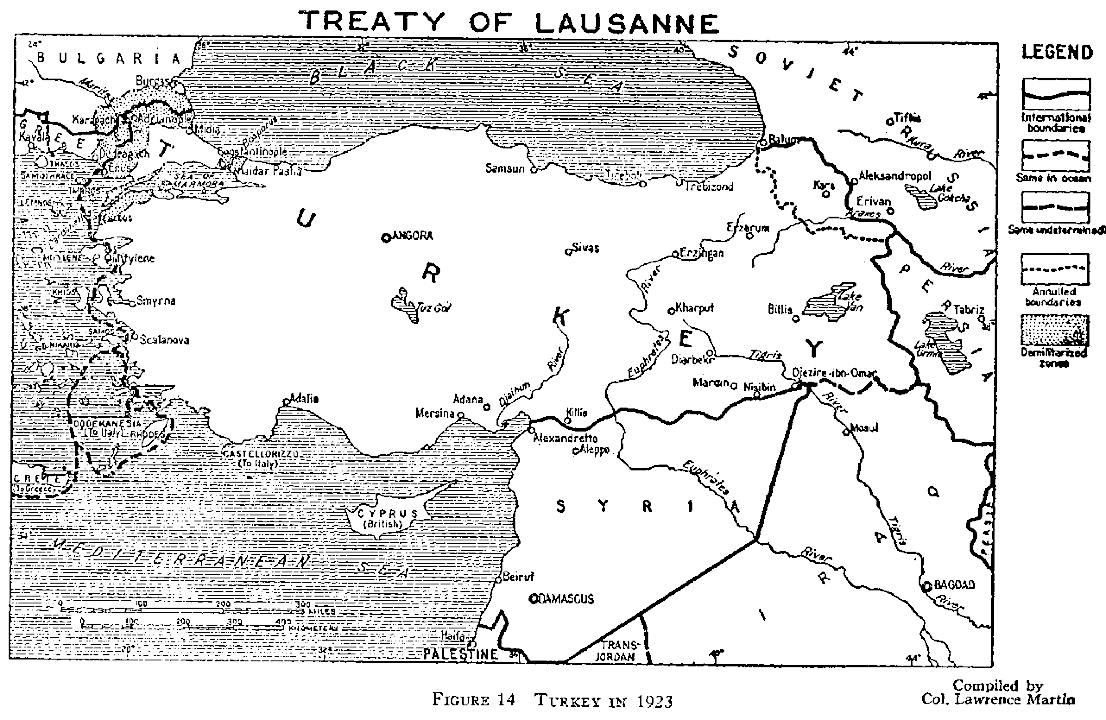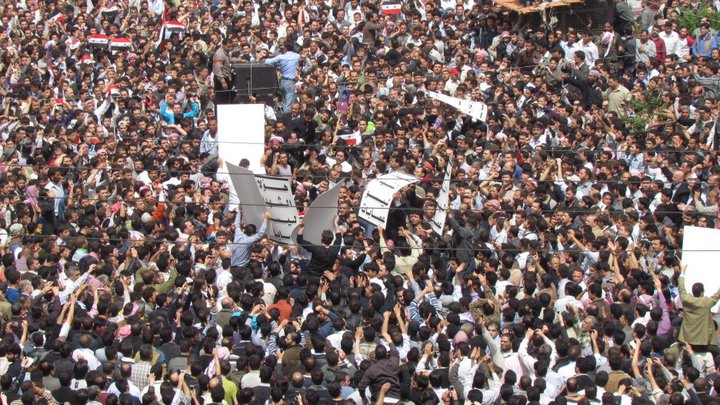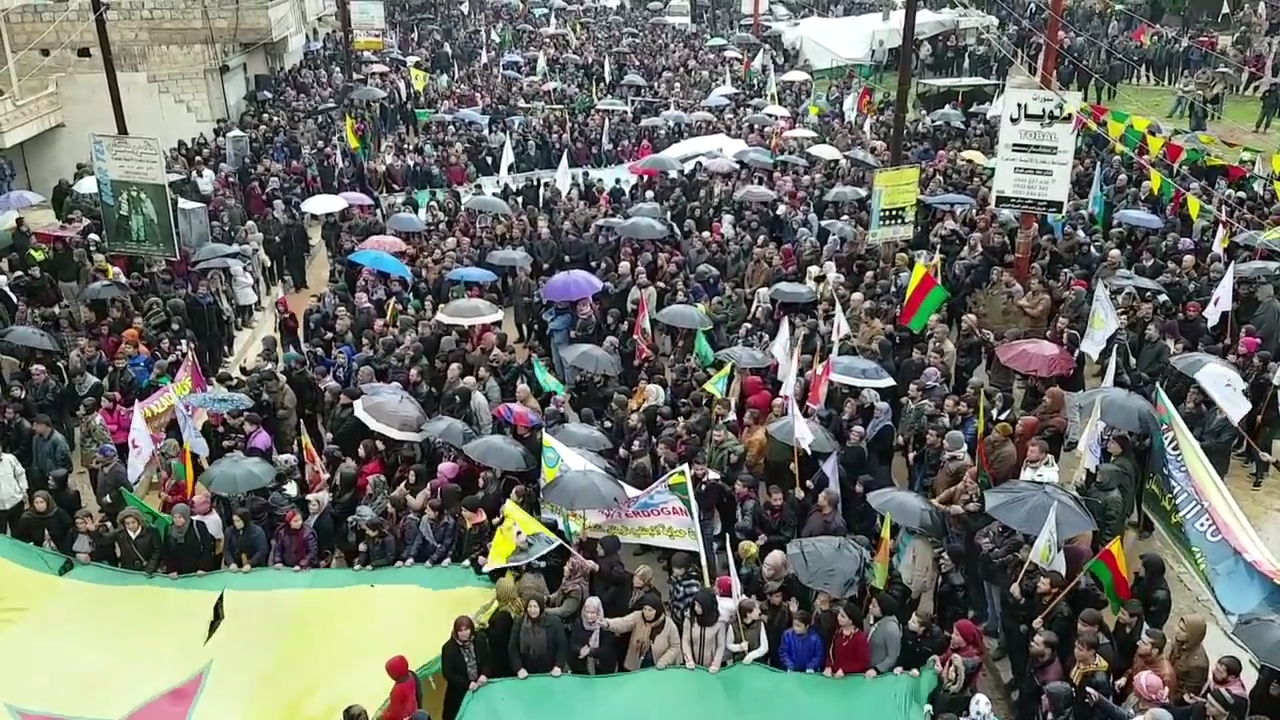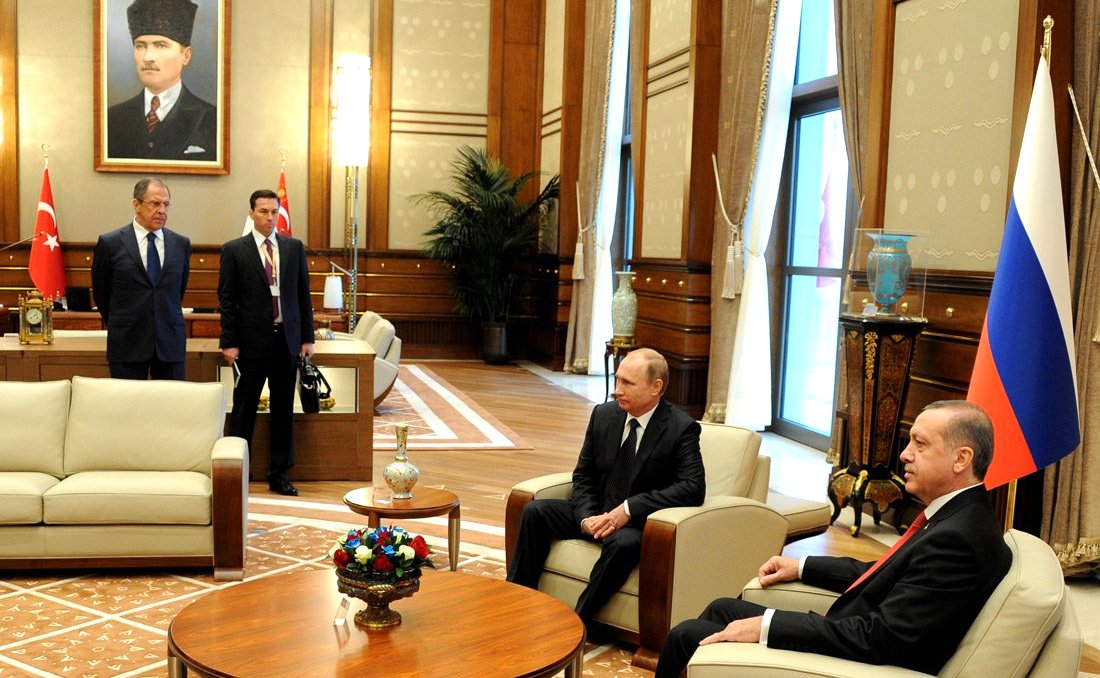PEPE ESCOBAR: The Road to Damascus: How the Syria War was Won
Following the Damascus-Kurdish alliance, Syria may become the biggest defeat for the Central Intelligence Agency since Vietnam, says Pepe Escobar.
Special to Consortium News
 What is happening in Syria, following yet another Russia-brokered deal, is a massive geopolitical game-changer. I’ve tried to summarize it in a single paragraph this way:
What is happening in Syria, following yet another Russia-brokered deal, is a massive geopolitical game-changer. I’ve tried to summarize it in a single paragraph this way:
“It’s a quadruple win. The U.S. performs a face saving withdrawal, which Trump can sell as avoiding a conflict with NATO ally Turkey. Turkey has the guarantee – by the Russians – that the Syrian Army will be in control of the Turkish-Syrian border. Russia prevents a war escalation and keeps the Russia-Iran-Turkey peace process alive. And Syria will eventually regain control of the entire northeast.”
Syria may be the biggest defeat for the CIA since Vietnam.
Yet that hardly begins to tell the whole story.
Allow me to briefly sketch in broad historical strokes how we got here.
It began with an intuition I felt last month at the tri-border point of Lebanon, Syria and Occupied Palestine; followed by a subsequent series of conversations in Beirut with first-class Lebanese, Syrian, Iranian, Russian, French and Italian analysts; all resting on my travels in Syria since the 1990s; with a mix of selected bibliography in French available at Antoine’s in Beirut thrown in.
The Vilayets
Let’s start in the 19thcentury when Syria consisted of six vilayets — Ottoman provinces — without counting Mount Lebanon, which had a special status since 1861 to the benefit of Maronite Christians and Jerusalem, which was a sanjak (administrative division) of Istanbul.
The vilayets did not define the extremely complex Syrian identity: for instance, Armenians were the majority in the vilayet of Maras, Kurds in Diyarbakir – both now part of Turkey in southern Anatolia – and the vilayets of Aleppo and Damascus were both Sunni Arab.
Nineteenth century Ottoman Syria was the epitome of cosmopolitanism. There were no interior borders or walls. Everything was inter-dependent.

Ethnic groups in the Balkans and Asia Minor, early 20th Century, Historical Atlas, 1911.
Then the Europeans, profiting from World War I, intervened. France got the Syrian-Lebanese littoral, and later the vilayets of Maras and Mosul (today in Iraq). Palestine was separated from Cham (the “Levant”), to be internationalized. The vilayet of Damascus was cut in half: France got the north, the Brits got the south. Separation between Syria and the mostly Christian Lebanese lands came later.
There was always the complex question of the Syria-Iraq border. Since antiquity, the Euphrates acted as a barrier, for instance between the Cham of the Umayyads and their fierce competitors on the other side of the river, the Mesopotamian Abbasids.
James Barr, in his splendid “A Line in the Sand,” notes, correctly, that the Sykes-Picot agreement imposed on the Middle East the European conception of territory: their “line in the sand” codified a delimited separation between nation-states. The problem is, there were no nation-states in region in the early 20thcentury.
The birth of Syria as we know it was a work in progress, involving the Europeans, the Hashemite dynasty, nationalist Syrians invested in building a Greater Syria including Lebanon, and the Maronites of Mount Lebanon. An important factor is that few in the region lamented losing dependence on Hashemite Medina, and except the Turks, the loss of the vilayet of Mosul in what became Iraq after World War I.
In 1925, Sunnis became the de facto prominent power in Syria, as the French unified Aleppo and Damascus. During the 1920s France also established the borders of eastern Syria. And the Treaty of Lausanne, in 1923, forced the Turks to give up all Ottoman holdings but didn’t keep them out of the game.

Turkish borders according to the Treaty of Lausanne, 1923.
The Turks soon started to encroach on the French mandate, and began blocking the dream of Kurdish autonomy. France in the end gave in: the Turkish-Syrian border would parallel the route of the fabled Bagdadbahn — the Berlin-Baghdad railway.
In the 1930s France gave in even more: the sanjak of Alexandretta (today’s Iskenderun, in Hatay province, Turkey), was finally annexed by Turkey in 1939 when only 40 percent of the population was Turkish.
The annexation led to the exile of tens of thousands of Armenians. It was a tremendous blow for Syrian nationalists. And it was a disaster for Aleppo, which lost its corridor to the Eastern Mediterranean.

Turkish forces under entered Alexandretta on July 5, 1938.
To the eastern steppes, Syria was all about Bedouin tribes. To the north, it was all about the Turkish-Kurdish clash. And to the south, the border was a mirage in the desert, only drawn with the advent of Transjordan. Only the western front, with Lebanon, was established, and consolidated after WWII.
This emergent Syria — out of conflicting Turkish, French, British and myriad local interests —obviously could not, and did not, please any community. Still, the heart of the nation configured what was described as “useful Syria.” No less than 60 percent of the nation was — and remains — practically void. Yet, geopolitically, that translates into “strategic depth” — the heart of the matter in the current war.
From Hafez to Bashar
Starting in 1963, the Baath party, secular and nationalist, took over Syria, finally consolidating its power in 1970 with Hafez al-Assad, who instead of just relying on his Alawite minority, built a humongous, hyper-centralized state machinery mixed with a police state. The key actors who refused to play the game were the Muslim Brotherhood, all the way to being massacred during the hardcore 1982 Hama repression.
Secularism and a police state: that’s how the fragile Syrian mosaic was preserved. But already in the 1970s major fractures were emerging: between major cities and a very poor periphery; between the “useful” west and the Bedouin east; between Arabs and Kurds. But the urban elites never repudiated the iron will of Damascus: cronyism, after all, was quite profitable.
Damascus interfered heavily with the Lebanese civil war since 1976 at the invitation of the Arab League as a “peacekeeping force.” In Hafez al-Assad’s logic, stressing the Arab identity of Lebanon was essential to recover Greater Syria. But Syrian control over Lebanon started to unravel in 2005, after the murder of former Lebanese Prime Minister Rafiq Hariri, very close to Saudi Arabia, the Syrian Arab Army (SAA) eventually left.
Bashar al-Assad had taken power in 2000. Unlike his father, he bet on the Alawites to run the state machinery, preventing the possibility of a coup but completely alienating himself from the poor, Syrian on the street.
What the West defined as the Arab Spring, began in Syria in March 2011; it was a revolt against the Alawites as much as a revolt against Damascus. Totally instrumentalized by the foreign interests, the revolt sprang up in extremely poor, dejected Sunni peripheries: Deraa in the south, the deserted east, and the suburbs of Damascus and Aleppo.

Protest in Damascus, April 24, 2011. (syriana2011/Flickr)
What was not understood in the West is that this “beggars banquet” was not against the Syrian nation, but against a “regime.” Jabhat al-Nusra, in a P.R. exercise, even broke its official link with al-Qaeda and changed its denomination to Fatah al-Cham and then Hayat Tahrir al-Cham (“Organization for the Liberation of the Levant”). Only ISIS/Daesh said they were fighting for the end of Sykes-Picot.
By 2014, the perpetually moving battlefield was more or less established: Damascus against both Jabhat al-Nusra and ISIS/Daesh, with a wobbly role for the Kurds in the northeast, obsessed in preserving the cantons of Afrin, Kobane and Qamichli.
But the key point is that each katiba (“combat group”), each neighborhood, each village, and in fact each combatant was in-and-out of allegiances non-stop. That yielded a dizzying nebulae of jihadis, criminals, mercenaries, some linked to al-Qaeda, some to Daesh, some trained by the Americans, some just making a quick buck.
For instance Salafis — lavishly financed by Saudi Arabia and Kuwait — especially Jaish al-Islam, even struck alliances with the PYD Kurds in Syria and the jihadis of Hayat Tahrir al-Cham (the remixed, 30,000-strong al-Qaeda in Syria). Meanwhile, the PYD Kurds (an emanation of the Turkish Kurds’ PKK, which Ankara consider “terrorists”) profited from this unholy mess — plus a deliberate ambiguity by Damascus – to try to create their autonomous Rojava.

A demonstration in the city of Afrin in support of the YPG against the Turkish invasion of Afrin, Jan. 19, 2018. (Voice of America Kurdish, Wikimedia Commons)
That Turkish Strategic Depth
Turkey was all in. Turbo-charged by the neo-Ottoman politics of former Foreign Minister Ahmet Davutoglu, the logic was to reconquer parts of the Ottoman empire, and get rid of Assad because he had helped PKK Kurdish rebels in Turkey.
Davutoglu’s Strategik Derinlik (“Strategic Depth’), published in 2001, had been a smash hit in Turkey, reclaiming the glory of eight centuries of an sprawling empire, compared to puny 911 kilometers of borders fixed by the French and the Kemalists. Bilad al Cham, the Ottoman province congregating Lebanon, historical Palestine, Jordan and Syria, remained a powerful magnet in both the Syrian and Turkish unconscious.
No wonder Turkey’s Recep Erdogan was fired up: in 2012 he even boasted he was getting ready to pray in the Umayyad mosque in Damascus, post-regime change, of course. He has been gunning for a safe zone inside the Syrian border — actually a Turkish enclave — since 2014. To get it, he has used a whole bag of nasty players — from militias close to the Muslim Brotherhood to hardcore Turkmen gangs.
With the establishment of the Free Syrian Army (FSA), for the first time Turkey allowed foreign weaponized groups to operate on its own territory. A training camp was set up in 2011 in the sanjakof Alexandretta. The Syrian National Council was also created in Istanbul – a bunch of non-entities from the diaspora who had not been in Syria for decades.
Ankara enabled a de facto Jihad Highway — with people from Central Asia, Caucasus, Maghreb, Pakistan, Xinjiang, all points north in Europe being smuggled back and forth at will. In 2015, Ankara, Riyadh and Doha set up the dreaded Jaish al-Fath (“Army of Conquest”), which included Jabhat al-Nusra (al-Qaeda).
At the same time, Ankara maintained an extremely ambiguous relationship with ISIS/Daesh, buying its smuggled oil, treating jihadis in Turkish hospitals, and paying zero attention to jihad intel collected and developed on Turkish territory. For at least five years, the MIT — Turkish intelligence – provided political and logistic background to the Syrian opposition while weaponizing a galaxy of Salafis. After all, Ankara believed that ISIS/Daesh only existed because of the “evil” deployed by the Assad regime.
The Russian Factor

Russian President Vladiimir Putin meeting with President of Turkey Recep Erdogan; Russian Minister of Foreign Affairs Sergei Lavrov standing in background, Ankara, Dec. 1, 2014 Ankara. (Kremlin)
The first major game-changer was the spectacular Russian entrance in the summer of 2015. Vladimir Putin had asked the U.S. to join in the fight against the Islamic State as the Soviet Union allied against Hitler, negating the American idea that this was Russia’s bid to restore its imperial glory. But the American plan instead, under Barack Obama, was single-minded: betting on a rag-tag Syrian Democratic Forces (SDF), a mix of Kurds and Sunni Arabs, supported by air power and U.S. Special Forces, north of the Euphrates, to smash ISIS/Daesh all the way to Raqqa and Deir ez-Zor.
Raqqa, bombed to rubble by the Pentagon, may have been taken by the SDF, but Deir ez-Zor was taken by Damascus’s Syrian Arab Army. The ultimate American aim was to consistently keep the north of the Euphrates under U.S. power, via their proxies, the SDF and the Kurdish PYD/YPG. That American dream is now over, lamented by imperial Democrats and Republicans alike.
The CIA will be after Trump’s scalp till Kingdom Come.
Kurdish Dream Over
Talk about a cultural misunderstanding. As much as the Syrian Kurds believed U.S. protection amounted to an endorsement of their independence dreams, Americans never seemed to understand that throughout the “Greater Middle East” you cannot buy a tribe. At best, you can rent them. And they use you according to their interests. I’ve seen it from Afghanistan to Iraq’s Anbar province.
The Kurdish dream of a contiguous, autonomous territory from Qamichli to Manbij is over. Sunni Arabs living in this perimeter will resist any Kurdish attempt at dominance.
The Syrian PYD was founded in 2005 by PKK militants. In 2011, Syrians from the PKK came from Qandil – the PKK base in northern Iraq – to build the YPG militia for the PYD. In predominantly Arab zones, Syrian Kurds are in charge of governing because for them Arabs are seen as a bunch of barbarians, incapable of building their “democratic, socialist, ecological and multi-communitarian” society.

Kurdish PKK guerillas In Kirkuk, Iraq. (Kurdishstruggle via Flickr)
One can imagine how conservative Sunni Arab tribal leaders hate their guts. There’s no way these tribal leaders will ever support the Kurds against the SAA or the Turkish army; after all these Arab tribal leaders spent a lot of time in Damascus seeking support from Bashar al-Assad. And now the Kurds themselves have accepted that support in the face of the Trukish incursion, greenlighted by Trump.
East of Deir ez-Zor, the PYD/YPG already had to say goodbye to the region that is responsible for 50 percent of Syria’s oil production. Damascus and the SAA now have the upper hand. What’s left for the PYD/YPG is to resign themselves to Damascus’s and Russian protection against Turkey, and the chance of exercising sovereignty in exclusively Kurdish territories.
Ignorance of the West
The West, with typical Orientalist haughtiness, never understood that Alawites, Christians, Ismailis and Druze in Syria would always privilege Damascus for protection compared to an “opposition” monopolized by hardcore Islamists, if not jihadis. The West also did not understand that the government in Damascus, for survival, could always count on formidable Baath party networks plus the dreaded mukhabarat — the intel services.
Rebuilding Syria
The reconstruction of Syria may cost as much as $200 billion. Damascus has already made it very clear that the U.S. and the EU are not welcome. China will be in the forefront, along with Russia and Iran; this will be a project strictly following the Eurasia integration playbook — with the Chinese aiming to revive Syria’s strategic positioning in the Ancient Silk Road.
As for Erdogan, distrusted by virtually everyone, and a tad less neo-Ottoman than in the recent past, he now seems to have finally understood that Bashar al-Assad “won’t go,” and he must live with it. Ankara is bound to remain imvolved with Tehran and Moscow, in finding a comprehensive, constitutional solution for the Syrian tragedy through the former “Astana process”, later developed in Ankara.
The war may not have been totally won, of course. But against all odds, it’s clear a unified, sovereign Syrian nation is bound to prevail over every perverted strand of geopolitical molotov cocktails concocted in sinister NATO/GCC labs. History will eventually tell us that, as an example to the whole Global South, this will remain the ultimate game-changer.
Pepe Escobar, a veteran Brazilian journalist, is the correspondent-at-large for Hong Kong-based Asia Times. His latest book is “2030.” Follow him on Facebook.



Geen opmerkingen:
Een reactie posten